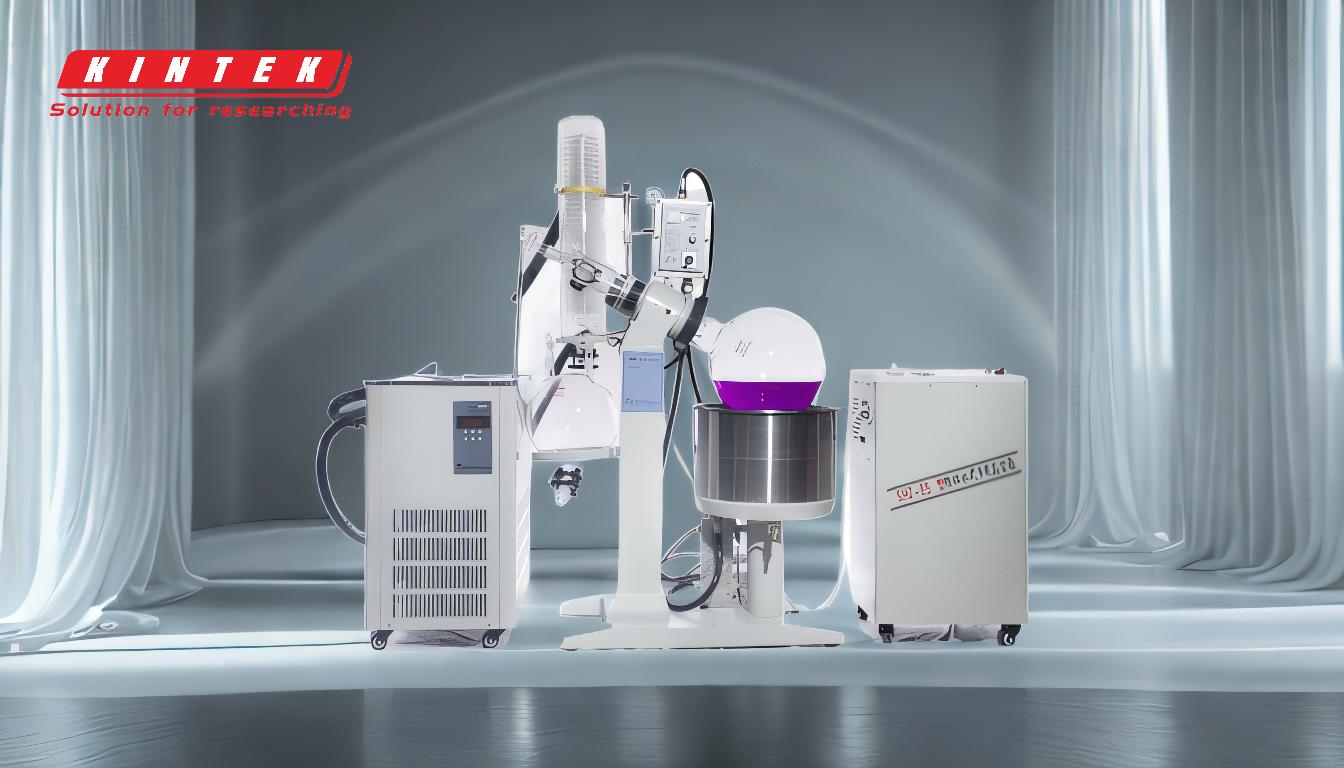A rotary evaporator (rotovap) is a laboratory device commonly used for solvent removal under reduced pressure. Whether it needs to be used in a fume hood depends on the solvents being evaporated, their volatility, toxicity, and the overall safety requirements of the laboratory. Generally, for volatile, toxic, or hazardous solvents, a fume hood is strongly recommended to ensure proper ventilation and operator safety. For non-toxic or low-volatility solvents, a well-ventilated area may suffice. Key considerations include the solvent's properties, the risk of chemical reactions, and the need to prevent exposure to harmful vapors.
Key Points Explained:

-
Volatility and Toxicity of Solvents:
- The primary factor determining whether a rotovap should be used in a fume hood is the nature of the solvent being evaporated. Volatile and toxic solvents, such as methanol, acetone, or chloroform, release harmful vapors that can pose health risks if inhaled. A fume hood ensures these vapors are effectively removed from the workspace.
- Non-toxic or low-volatility solvents, such as water or glycerol, may not require a fume hood but still need adequate ventilation to prevent the buildup of vapors.
-
Risk of Chemical Reactions:
- Some solvents or mixtures can react violently under reduced pressure or elevated temperatures. For example, air-reactive materials can cause explosions if air leaks into the system. A fume hood provides an additional layer of safety by containing any potential reactions and venting harmful gases.
- Incompatible chemicals accidentally mixed in the solvent collection flask can also pose risks. A fume hood helps mitigate these hazards by providing a controlled environment.
-
Operator Safety:
- A fume hood protects the operator from exposure to harmful vapors and aerosols, which can cause respiratory issues, skin irritation, or other health problems. This is particularly important when working with hazardous or unknown substances.
- The fume hood also shields the operator from potential implosions or explosions caused by flawed glassware or unstable impurities.
-
Laboratory Ventilation Requirements:
- Even if a fume hood is not strictly required, the rotovap should always be used in a well-ventilated area to prevent the accumulation of solvent vapors. Poor ventilation can lead to a hazardous environment, especially in small or enclosed spaces.
- Laboratories often have specific guidelines for equipment placement based on ventilation and safety standards.
-
Additional Safety Measures:
- Using a bump trap and securely fastening glassware with clips can prevent spills and contamination, but these measures do not replace the need for proper ventilation.
- Protective gear, such as goggles, gloves, and lab coats, should always be worn when operating a rotovap, regardless of whether a fume hood is used.
-
Compliance with Regulations:
- Many laboratories are required to follow safety regulations and guidelines, such as those from OSHA or local authorities, which may mandate the use of a fume hood for certain procedures.
- Institutional policies may also dictate the use of a fume hood for rotovap operations to minimize liability and ensure a safe working environment.
In summary, while a rotovap does not always need to be in a fume hood, using one is strongly recommended when working with volatile, toxic, or hazardous solvents, or when there is a risk of chemical reactions. Proper ventilation and adherence to safety protocols are essential to protect both the operator and the laboratory environment.
Summary Table:
| Factor | Requirement |
|---|---|
| Volatile/Toxic Solvents | Use a fume hood to remove harmful vapors and protect the operator. |
| Non-Toxic Solvents | A well-ventilated area may suffice, but ensure proper ventilation. |
| Risk of Chemical Reactions | Fume hood recommended to contain reactions and vent harmful gases. |
| Operator Safety | Fume hood protects against harmful vapors, aerosols, and potential explosions. |
| Lab Ventilation | Always ensure adequate ventilation, even if a fume hood is not required. |
| Regulatory Compliance | Follow OSHA and institutional guidelines for safe rotovap operation. |
Ensure your lab operates safely with the right equipment—contact us today for expert advice on rotary evaporators and fume hoods!











